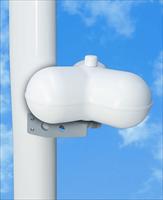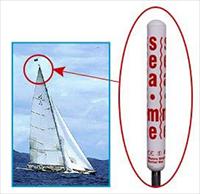Radar Reflectors
For many years there have been discussions regarding the effectiveness of the radar reflectors that are used on small craft.
Personally I have never had much faith in their use and regard them rather like most of the lights that are sold for attaching to life rings as being of doubtful value when they are really needed.
On a yacht, I have been able to pick up on radar a drinks can floating on the water at about ½ mile range in flat calm conditions, however when there is interference from wave effects or rain, it takes a far larger object to be certain that there is anything there at all. The radars used on ships are far more advanced that those used on leisure craft and with a professional operator, can detect objects in difficult conditions but this can take constant monitoring, with the shortage of crew on most commercial vessels this is not something that can be guaranteed.
Many commercial vessels rely on the use of automated guard zones set at 3 and 5 miles to warn of the proximity of another vessel, for these to work well the target vessel needs to present a fairly regular reflection.
It is important that yachts have the equipment aboard and fitted correctly so that the the chance of being picked up by the radar operator is maximised. Vessel owners should familiarise themselves with the latest developments in the products that are available. Some of the products that are sold to enhance the vessel's radar profile are virtually useless and the danger of these is when people are fitting out their vessel on a tight budget, they gain a false sense of security from fitting devices that are probably a waste of money.
This issue has been raised again by the loss of the yacht Ouzo off the South Coast of the UK. It is believed that this loss was caused by a collision with or a near passage by of a very large cross Channel ferry. It appears that the yacht was not detected on the ship's radar and was only visually observed when it was in a very close quarters situation.
The resulting investigation led to the Maritime and Coastguard Agency (MCA) commissioning the defence contractor, QinetiQ to study the effectiveness of some of the radar reflectors currently available in the UK.
In a response to this the MCA have issued a guidance notice, MGN 349 (M+F) which is essential reading for anyone thinking of purchasing equipment to make their vessel more radar visible.
The report indicates that:
- The equipment fitted should give the vessel a Radar Cross Section (RCS) of at least 10m².
- An RSC of at least 2.5m² over an azimuth angle of 240° when the reflector is vertical (vessel not heeling).
- An RSC of at least 0.625m² over and azimuth angle of at least 240° for angles of heel up to ±15°.
- The equipment must be fitted as recommended by the manufacturer.
- The equipment must be permanently mounted and be at a height of at least 4m.
Models

Firdell Blipper 210-7 is a very commonly fitted model and performed well in the test. It is also light and not too expensive but sailors should be aware that its performance falls off when the vessel heels beyond 10°.
Echomax 230 - performed will in the test and is not heavy but again performance is reduced at angles of heel over 10°.
 Viking Tri Lens - both the large and standard models performed well in the test but are heavier than other models. The large version weighs 5.5kg, which may be an issue when it is fitted at a reasonable height above the water.
Viking Tri Lens - both the large and standard models performed well in the test but are heavier than other models. The large version weighs 5.5kg, which may be an issue when it is fitted at a reasonable height above the water.
Active Reflectors (RTE)
Active radar enhancers like the
Sea Me
are becoming more easily available and common on yachts. Because of the cost and power consumption, I have only come across them on larger vessels where these issues tend to be less of a problem. These units use power to enhance the signal returned to the radar set and are far more effective that the passive models. They do seem to be the way ahead but at present they only operate on X-band radar and not on S-band.

The other concern I have with them is what happens in an area like the Solent on a busy day if everyone turns them on? I imagine that they would very quickly become a nuisance and more of a hindrance to commercial vessels in this type of area. As RTEs become more common it will mean that the users of small craft will need to be disciplined enough in their use that they turn them off when they are clearly not required, I would also have a passive reflector available for those occasions when the power fails!
If there is no-one working on the radar of an approaching ship it does not matter what equipment you have fitted, so a prudent yacht skipper will continue to sail defensively - all this means is that you try to avoid getting in to a dangerous position relative to a large vessel if possible.
Some years ago I was sailing off the Devon coast when HMS Fearless was involved with a collision with a German oil tanker, the visibility was very poor with thick fog, but if a warship with all its detection gear a large crew can not avoid a tanker, I do not want to rely on a merchant vessel avoiding a yacht.
AIS
Commercial vessels now have AIS (Automatic Identification System) installed. If you have a suitable
 a
receiver fitted you can obtain information from these vessels regarding their name, position, course and speed which may be of value to for avoiding a collision and if really necessary contacting them by VHF radio.
a
receiver fitted you can obtain information from these vessels regarding their name, position, course and speed which may be of value to for avoiding a collision and if really necessary contacting them by VHF radio.
There are some websites that display information from AIS signals, visiting these will give you an idea of the system's value on a small craft.
Solent: http://www.john-ambler.com/ais/google.html
Worldwide: http://www.marinetraffic.com/ais/
Sailtrain.co.uk is free to use, but if you feel you would like to contribute to the running and development costs you can donate via Paypal:
Additional Resources:

